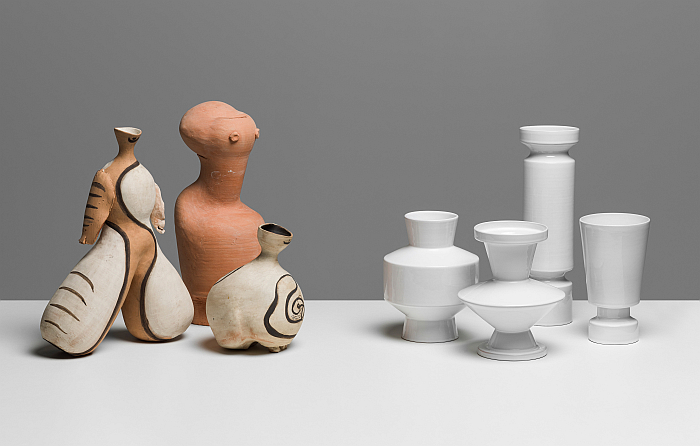According to Germanic folklore, "If December is wild with rain, then leave your fields and get thee to an architecture or design museum"
Our five locations for escaping the rains of December 2023 can be found in Cottbus, Rome, Maastricht, Tallinn and Zürich.......
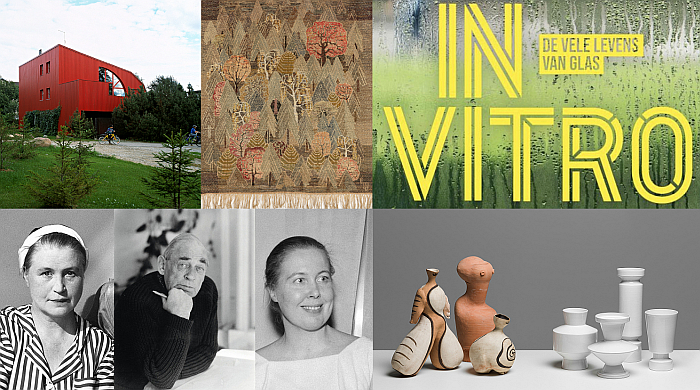
In context of their 2019 exhibition Unknown Modernism the Brandenburgisches Landesmuseum für moderne Kunst, BLMK, provided for the most fleeting of insights, the most fleeting of introductions, to the depth and scope of the oeuvre of Else Mögelin, a creative, a position to textile design, all too often reduced to a couple of large rugs. With Ich wollte, gegen alle Hindernisse, weben, [In the face of all obstacles, I wanted to weave] they promise a more exhaustive exploration.
Born in Berlin on April 20th 1887 Else Mögelin trained as a drawing teacher and shop window decorator in the German capital before enrolling in 1919 at Bauhaus Weimar, as one of the earliest students, and where after an initial period in the pottery at Dornburg she joined the weaving workshop in 1921. And left in 1923 to establish her own hand-weaving studio as part of the artist and handworker colony at Gildenhall, to the north of Berlin, one of those all too regularly overlooked, unfairly so, inter-War institutions, and where she remained until 1927 when she moved from Gildenhall to, then, Stettin, now Szczecin, where alongside heading the textile class at the Werkschule für gestaltende Arbeit she cooperated with numerous local textile firms. Post-War, with Stettin/Szczecin now Polish, Mögelin moved to Hamburg to take up the position of head of the textile class at the Hochschule für bildende Künste, and where she remained until her retirement in 1952. Else Mögelin died in Kiel on December 31st 1982, aged 95.
Promising a presentation of some 110 textiles and paintings by Mögelin from across the decades of her career Ich wollte, gegen alle Hindernisse, weben should not only provide for an extensive introduction to the approaches, positions and career of a most interesting and informative creative but should also allow for differentiated perspectives on inter-War creativity, and thereby should allow us all to approach more probable appreciations of the paths of architecture and design in the first half of the 20th century.
Else Mögelin. Ich wollte, gegen alle Hindernisse, weben is scheduled to open at the Brandenburgisches Landesmuseum für moderne Kunst, Dieselkraftwerk, Uferstraße/Am Amtsteich 15, 03046 Cottbus on Saturday December 2nd and run until Sunday March 3rd. Further details can be found at https://www.blmk.de
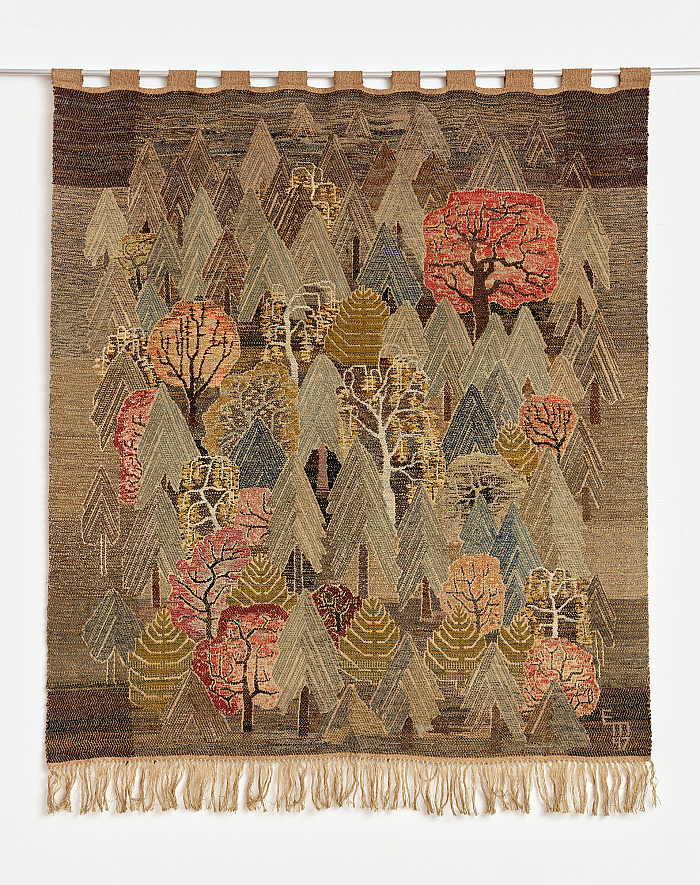
To be honest we have very little idea what will be contained behind the title Aalto – Aino Alvar Elissa. The Human Dimension of Design and that because MAXXI Rome are doing that thing beloved of architecture, design and art museums of keeping details of their forthcoming exhibitions secret, trying to entice visitors by giving away as little information as possible. Why do museums do that? We no know, but it is infuriating that so many do. Where's the harm in information? All we know is that Aalto – Aino Alvar Elissa will feature 11 projects by the Aaltos... which ones? MAXXI Rome don't consider it important or are so terrified of someone stealing their idea, they're not telling anyone, sorry, we digress..... 11 projects via which the curators aim to not just approach a more nuanced appreciation of the Aaltos' canon but for all more nuanced appreciations of their projects' relationships to their users and the surrounding environment, that humanising of the harsher ends of Modernist Functionalism and that understanding of architecture as being more than a physical structure that is and was so important in the Aaltos' work.
But primarily, and most pleasingly, The Human Dimension of Design will, or at least the title implies it will, discuss 'Aalto' as Aino, Alvar and Elissa and not alone as the Alvar who has become so dominant in contemporary definitions of 'Aalto', and thereby should allow for not only a greater visibility of Aino and Elissa than that currently afforded them, and thereby allow for the start of a better informed re-evaluation of the Aalto oeuvre, development and legacy, but also help elucidate the urgency of us all taking much wider perspectives on the (hi)story of architecture and design.
Aalto – Aino Alvar Elissa. The Human Dimension of Design is scheduled to open at Museo nazionale delle arti del XXI secolo, MAXXI, Via Guido Reni, 4 A, Rome on Thursday December 14th and run until Sunday May 26th. Further details can be found at www.maxxi.art
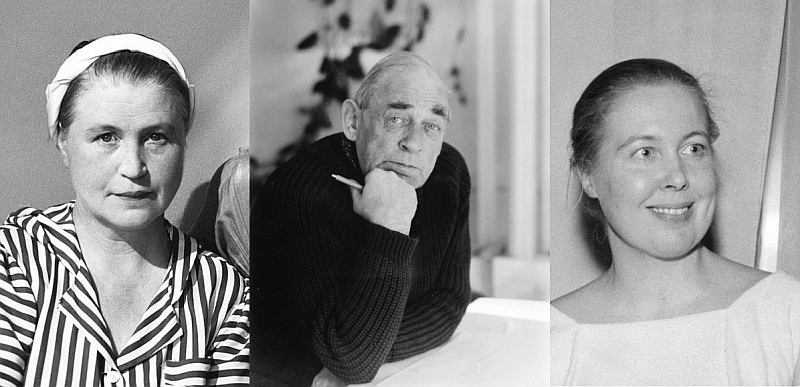
Glass is not only an actual, physical, material but also one of the more symbolic, figurative, materials, not least through its transparency and its fragility, a symbolism that takes on new dimensions, literally, when glass is employed in architecture.
A use of glass in architecture, and a symbolic, figurative functionality of glass, that Maastricht's Bureau Europa aim to explore via 5 chapters that promise to trace and explore glass's utilisation, importance and relevance from the stained glass windows of centuries past to future-orientated applications of glass, the latter not least in context of our climate emergency and developing novel economic models.
An exploration which while very much having the local glass tradition and practice of the Limburg region of the Netherlands/Belgium in which Maastricht stands as its focus also promises to take a more global view, and also to move beyond architecture per se. And in doing such In Vitro should not only allow for alternative approaches to glass, including helping elucidate the ever changing and evolving relationships between glass and human society, but also allow for alternative approaches to appreciations of the evolution of architecture, physical and figurative.
In Vitro. The many lives of glass is scheduled to open at Bureau Europa, Timmerfabriek, Boschstraat 9, 6211 AS Maastricht on Saturday December 16th and run until Sunday June 16th. Further details can be found at www.bureau-europa.nl
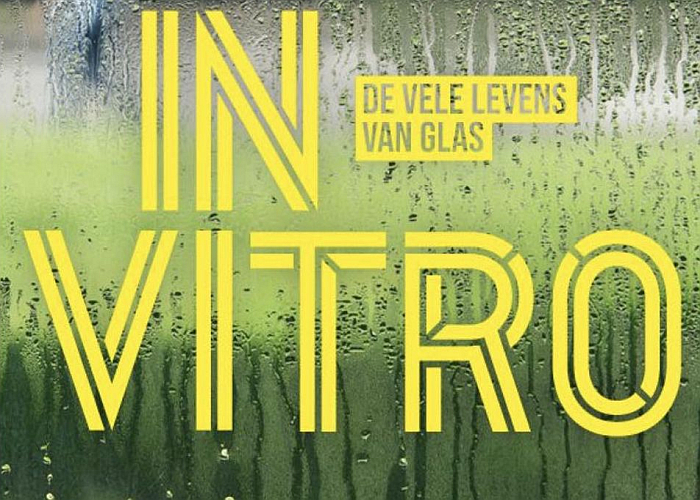
Amongst the great many problems of the dominant western European gaze on the (hi)story of architecture and design is that the limited perspective it offers naturally limits our appreciations of the paths thus taken.
Amongst the great many problems of understanding architectural (hi)story as being the works of a small group of coffee table book architects is that in making them definitive it denigrates and denies the contributions of the great many voices without which development and evolution would be impossible.
With Bold and Beautiful the Estonian Museum of Architecture should allow a platform for highlighting and tackling both problems simultaneously, promising as it does for an overview of private house design and construction in Estonia between the late 1970s and 1991, that period popularly defined as 'Postmodern', that phrase we no longer use, but have still to find an alternative terminology to discuss; specifically concentrating geographically on projects in Viljandi, Tartu and Ilmandu, but featuring featuring projects from across Estonia including, and amongst others, Veljo Kaasik's so-called Venna maja in Merivälja or a house for Erika Salumäe in Pirita by Maire Annus. And thereby Bold and Beautiful should not only allow for differentiated insights into 1980s architectural positions and approaches, nor only insights into the development of architecture in Estonia, but also for views of Estonia outwith Tallinn. And views of 1980s Estonia beyond the easy prejudice of 'Soviet'.
Bold and beautiful. Estonian private houses from the 1980s opened at the Estonian Museum of Architecture, Ahtri 2, Tallinn 10151 on Thursday November 30th and is scheduled to run until Sunday April 21st. Further details can be found at www.arhitektuurimuuseum.ee
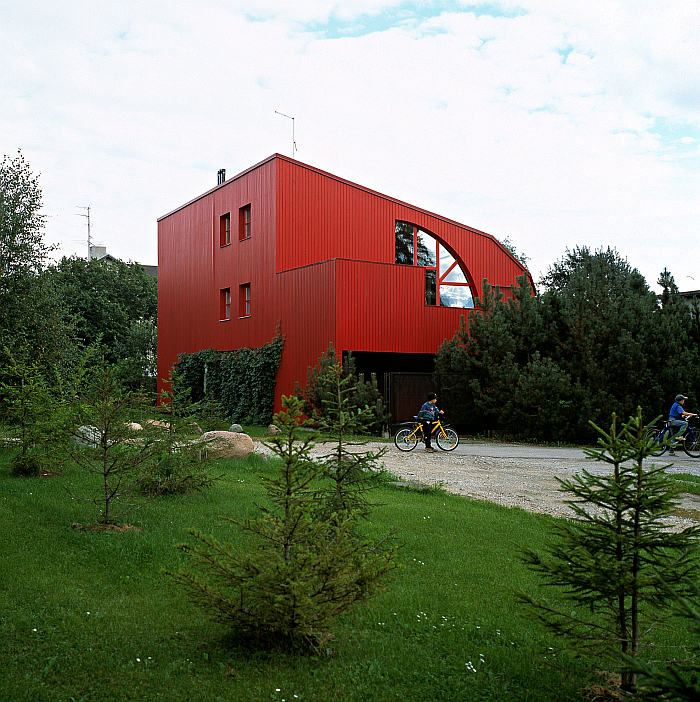
Born in Oppligen, neart Thun, in 1897 Margrit Daepp trained in ceramics in the early 1920s in Wichtrach, Bern, Munich and Berlin before, as Margrit Linck, moving with her husband, the sculptor Walter Linck, to Paris where the couple spent the late 1920s. You do the math.
Having returned to Switzerland in 1930 Linck established in 1935 her own pottery studio in Wabern, then a village near Bern, today a suburb of Bern, and that as the very first female to formally establish a pottery business in Switzerland. And from where she began a career that saw her move between traditional pottery and more avant-garde approaches, between a reduced minimalism and a decadent expressionism, between utilitarian and decorative, between craft and art. A refusal to be constrained by any particular approach or position or genre that also saw her, enabled her, arguably, to span a bridge between the Surrealism of her early career and the 'Postmodernism' of her later years, a not uninteresting or uninformative bridge.
Promising a presentation of objects, photographs and sketches from across the many years of her career, and the various and varied approaches of her practice, Margrit Linck. Pioneer of Ceramics should allow not only for an introduction to a fascinating creative, and thereby allow her to retake her position on the helix of design (hi)story, but also allow for fresh perspectives on both the development of creativity in Switzerland and also of the relationships and the exchange between developments in Switzerland and developments outwith.
Margrit Linck. Pioneer of Ceramics is scheduled to open at the Museum für Gestaltung, Toni-Areal, Pfingstweidstrasse 96, 8005 Zürich on Friday December 1st and run until Sunday April 14th. Further details can be found at https://museum-gestaltung.ch
